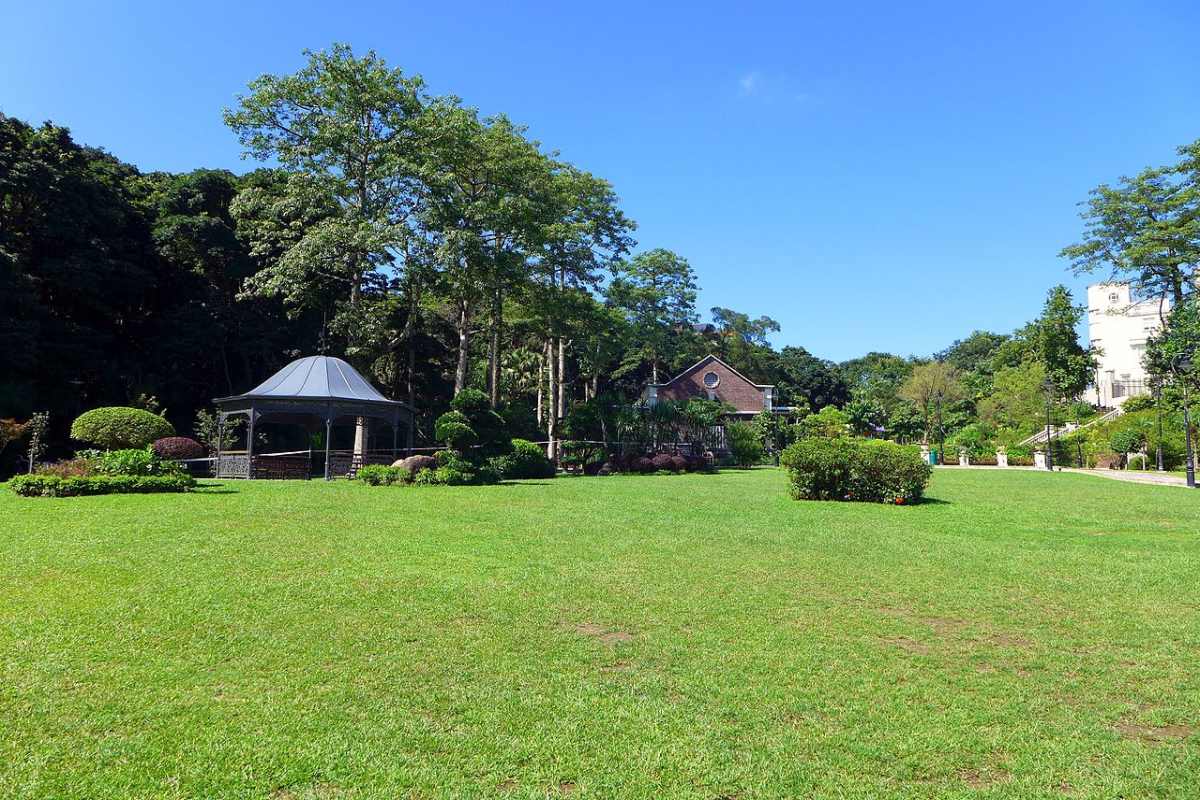
Whether you’re just moving to the “Live Music Capital of the World” or you’ve been an Austinite for years, having a lush, healthy lawn is always a plus. However, with the weather extremes, including scorching heat and occasional flooding, lawn care in Austin, TX, can be challenging. Don’t let anything hold you back.
In this lawn care guide, you’ll find everything you need to know to keep your lawn looking its best throughout the year. From basics like lawn mowing, watering, and fertilizing to more advanced topics like pest control and aeration, you’ll find all the tips and tricks to Austin lawn care success. So, let’s get started!
In this article:
- Soil Preparation
- Choose the Right Grass
- Mowing
- Core Aeration
- Fertilization
- Mulching
- Overseeding
- Water Regulations in Austin
- Common Lawn Insects in Austin
- Austin Weed Control
- Lawn Care Tips for a Lush Austin Summer Lawn
- Lawn Care Services in Austin, TX
- FAQ
Soil Preparation
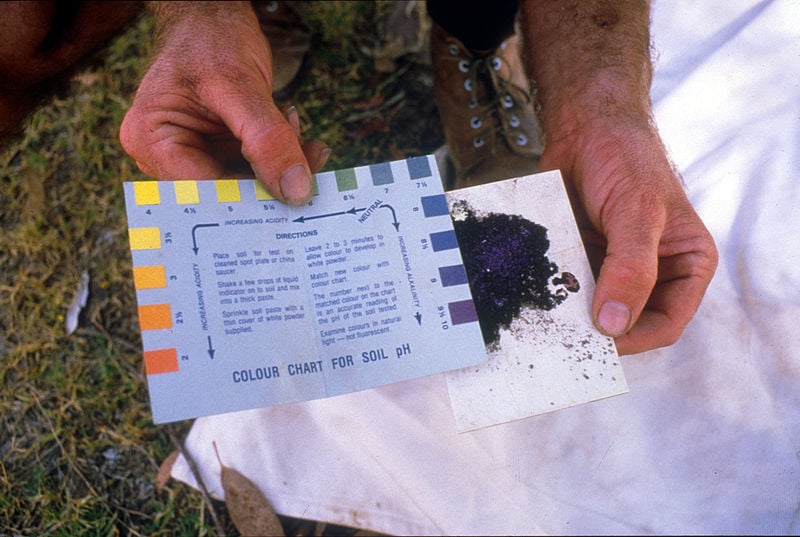
The first step in setting your lawn up for success is preparing the soil. The Austin area has alkaline soil, so make sure you test your pH level. You can get a soil test at your local hobby store or garden center to determine the nutrient profile of your soil and adjust accordingly.
If you’re planning to start a lawn from scratch, or have recently had the soil replaced, consider topdressing with quality compost. This will give your lawn a great start and provide much-needed nutrients for optimal growth.
Additionally, a test can help homeowners identify the best type of grass to plant on their lawns. Austin soil is mostly clay, so you’ll need a grass variety that can thrive in this type of soil.
Choose the Right Grass
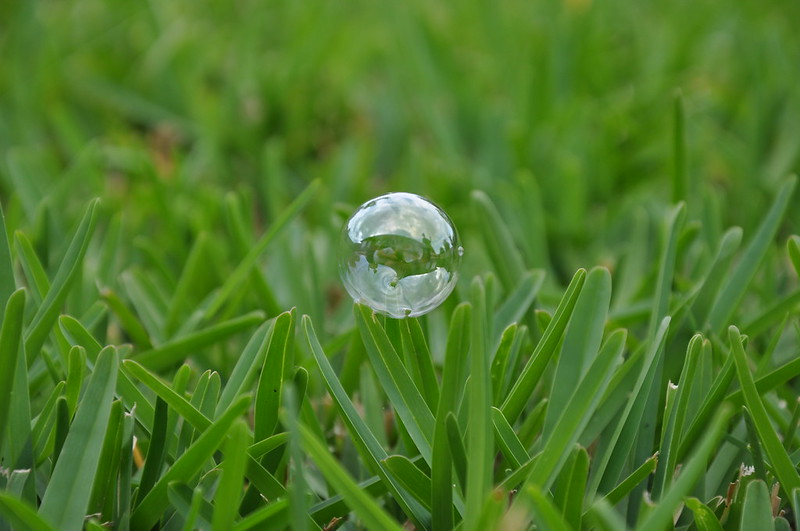
The next step is choosing the right grass for your Austin lawn. Lucky for you, there are some great grass varieties that can handle the extreme heat and soil conditions of Austin, such as:
- St. Augustinegrass
- Bermudagrass
- Zoysiagrass
St. Augustine is the most popular choice in Austin due to its vibrant green color and extreme heat resistance. It’s also the least water-demanding and will thrive in both full sun and partial shade.
Bermudagrass is best for sunny areas and does well in hot weather. It’s an aggressive grower and can take off quickly if fertilized and watered properly.
Zoysiagrass is softer and more tolerant of damage, making it ideal for high-traffic areas like parks and sports fields. It prefers full sun and generally requires less maintenance than the other varieties.
Ryegrass may also be a good choice for Central Texas lawns, as it’s more drought-tolerant than most types of grass. It is a cool-season grass, which means it will stay green year-round. However, it does require more maintenance.
Mowing
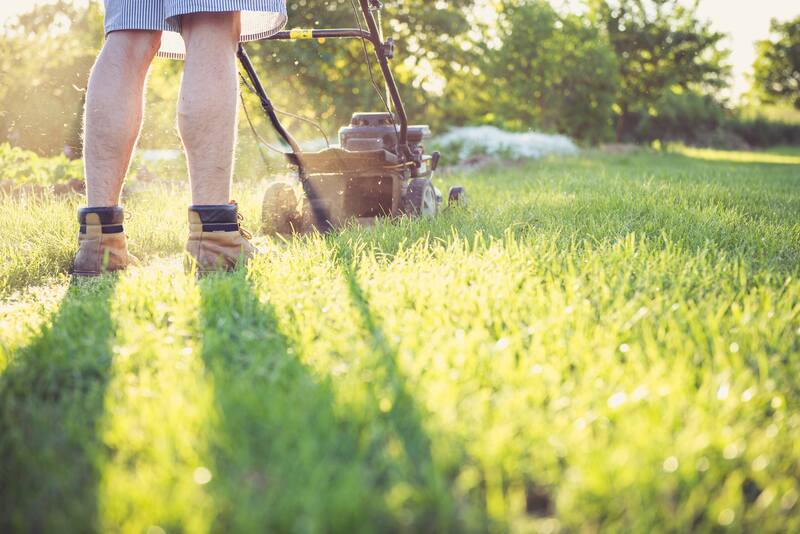
Once you have a well-established lawn, it’s time to start mowing. Mowing is one of the most important aspects of lawn care and implies more than just grass cutting. For a healthy and thriving lawn, Austinites should follow three basic rules:
Mow at the Proper Height
Know your grass type and consider the recommended cutting height. For St. Augustine, the height should be between 2.5-3 inches, and for Bermuda, anywhere between 1.5- 2 inches is recommended.
Cutting off more than one-third of the grass’s length should be avoided at all costs, as it leads to a shabby lawn.
Keep Your Lawn Mower Blade Sharp
The mowing blade should be sharp and capable of providing a clean cut. Check the grass blades after mowing and ensure they aren’t tattered. Dull blades can tear the grass instead of cutting it, which is terrible for growth.
Inspect the mower blade regularly and sharpen or change it once a year. Professional lawn mowing services usually change or sharpen the blades every day or two.
Whether you’re an Austin resident or a professional lawn care provider, having the right mower is key to creating and maintaining a healthy lawn. There are many benefits to investing in a good quality, feature-packed mower:
- Mulching Blades: Mulching blades chop up the grass into tiny pieces, serving as a natural fertilizer for your lawn.
- Grass Bags: A grass bag is a must-have for those who prefer to collect their grass clippings.
- High-Quality Engines: High-quality engines not only provide a better performance, but they can also last longer when mowing bigger properties.
Mulch the Grass Clippings
Grass clippings contain valuable nutrients that help keep the soil soft, moist, and healthy. Mulching the clippings helps to break them down into tiny pieces and return them to the soil quickly. Don’t forget to mulch your clippings for natural fertilizer.
Pro Tips for Mowing in Austin
Here are a few additional lawn care tips to keep in mind for Austinites:
- Mow based on the frequency of growth and not a set schedule, as the growth rate of your lawn may vary depending on the season and other factors.
- Don’t let your lawn grow too tall. Typically, you should mow weekly during the growing season and less during fall. When there’s a water restriction, you should cut it once every two weeks.
- The last cut of the season should be before the first frost to prevent any damage caused by the cold.
- It’s best for the grass to be cut when it’s dry, so it’s better to wait until the morning dew is gone before you start mowing.
- If you’re using lawn mowing services in Austin, ensure they adhere to the rule of never mowing lower than one-third of the grass’s original height.
- Ensure you’re wearing the right gear and disposing of your clippings correctly.
Core Aeration
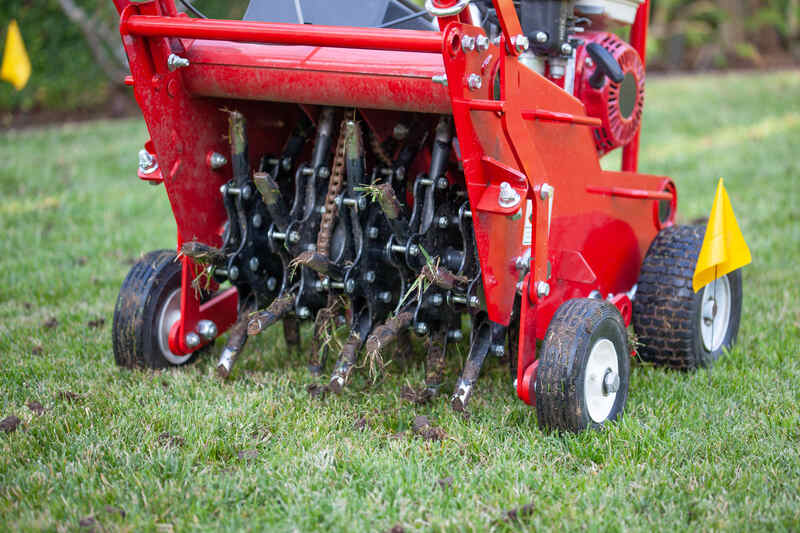
Aeration is a process used to reduce the soil compaction of your lawn, allowing more air and nutrients to reach the grass’s roots. It helps improve the soil structure, root growth, and overall turfgrass health when done correctly.
The Aeration Process
Soil compaction is when the soil has too many particles squeezed together, and the air has been forced out of them, resulting in a hard surface. Having compacted soil is bad news for your lawn because when the air can’t reach the roots, neither can much-needed water or nutrients.
This means that your grass won’t be able to grow to its fullest potential. Aeration is the process of using a specialized tool called an aerator to puncture small holes in the soil and pull out small plugs of lawn dirt.
The holes created by the aeration process allow oxygen to reach the root systems, allowing for improved nutrient absorption. Not only that, but these holes also allow water to travel deeper into the ground, promoting healthy deep roots.
When to Aerate
For cool-season grasses, such as fescue or ryegrass, the best time to aerate your lawn is in October or November, when the soil is likely to retain more of the moisture from precipitation and provide a better environment for the roots. Warm-season grasses, like Bermudagrass, should be aerated in May or early June.
Aerate at least once yearly, especially if your lawn gets a lot of foot traffic from kids and pets. If your lawn has recently been sodded or reseeded, wait at least three to four months before you aerate, as these processes are already abrasive and may cause soil compaction.
Pro Tips for Aeration in Austin
- Pulling the clippings and weeds before you aerate is best, as the aeration process can spread weed seeds.
- Don’t aerate during periods of extreme heat or drought.
- Aerate the soil when it is wet but not over-saturated.
- Using a core aerator instead of spikes is better, as the spiked soil will not relieve the pressure within the lawn.
Fertilization
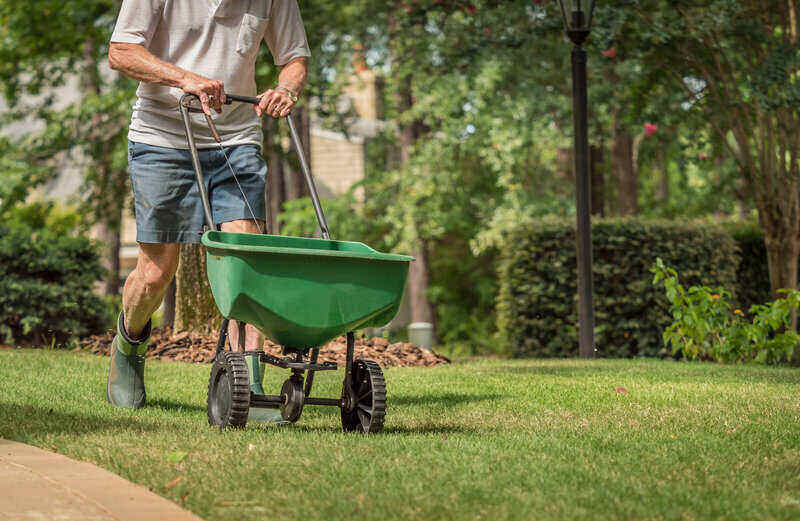
Having a lush and green lawn is everyone’s dream, and every homeowner in Austin, TX, knows that fertilization is the key to achieving this goal. Fertilizing keeps away weeds and pests and helps build healthier soil.
So, if you want to feed your lawn and make it thick and beautiful, here’s what you need to know about fertilization in Austin.
Fertilization Time
Most grasses in Austin are warm season, meaning they need a certain period of time to develop optimally. Fertilization should be done right before the grass goes into its highest growing spurt, usually during the late spring or early summer. In addition, you can give it another round of fertilizer toward the end of summer, preferably before September.
Fertilizing Techniques
You have several options when it comes to fertilizing, including:
- Broadcast or Rotary Spreader – This is best for large-scale applications. Spread the fertilizer around the edge of the lawn, and then move inward in a consistent pattern to cover the entire yard.
- Drop Spreader – This method is excellent if you want a more controlled fertilization. Like all other techniques, try and overlap the paths a bit.
- Handheld Broadcast Spreader – This is the ideal method for smaller lawns since it gives you more precision. Balance the fertilizer throughout the lawn, especially in the shady or harder-to-reach areas.
Pro Tips for Fertilizing in Austin
- Before you start, it’s essential to water the lawn deeply and let it dry.
- Fertilizing between rainstorms is a smart move.
- After lawn fertilization, water the yard again for the fertilizer to work its magic on the soil and grass.
- Your lawn is in for an extra boost of nutrients if you follow up with fertilization right after aeration. Aeration opens up the soil and grass roots, allowing them to absorb more of the nutrients provided by the fertilizer.
- Gypsum humates are great for aeration and provide you with improved drainage, soil porosity, and enhanced microbial health.
- It’s sometimes easy to forget, but leaving the clippings sprawled across your lawn gives it nearly 30% of the nutrients needed.
- Adding clover to your lawn can bring you a host of benefits. Not only does it act as a natural source of nitrogen, but it also helps repel common pests like grubs and fights against various diseases.
Mulching
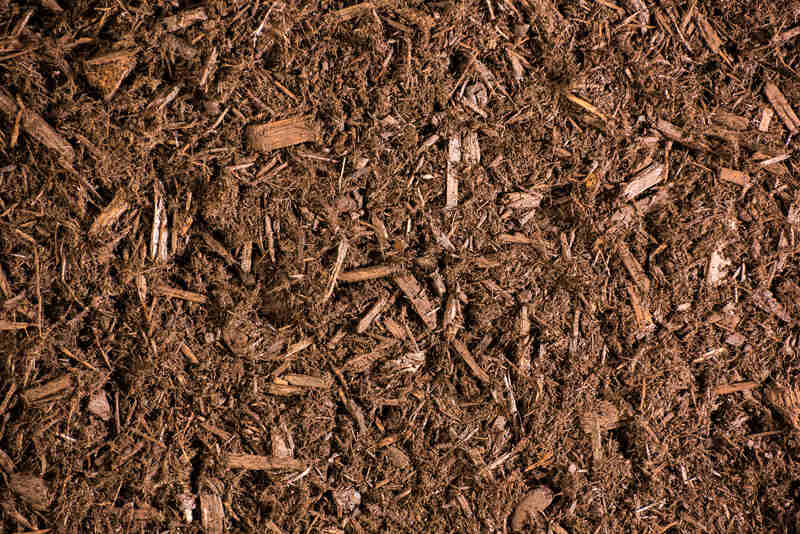
Mulching is not only great for aesthetic reasons but also an essential step in landscaping that can help your soil retain water and essential nutrients. In Austin, TX, there are various types of mulch to choose from, with different colors, textures, and materials for any kind of need.
Typically, mulching is ideal for keeping the soil moist, preventing weeds from growing, and maintaining a consistent temperature for plants. You can use mulch around the base of trees and shrubs and in flower beds and gardens to give your whole yard a more polished look.
The main benefits of mulch:
- Promotes weed control
- Preserves moisture in the soil and helps keep it cool
- Lessens soil compaction
- Helps reduce water runoff
- Aids in nutrient retention
- Helps control soil erosion
Selecting Mulch
When it comes to selecting mulch, understanding the type of material and texture is essential. If you want to save water, the kind of mulch you choose is important. Decorative mulch is great for looks but might not do anything else.
And watch out for artificial mulches with large chunks of plastic. It’ll stop weeds but also make it hard for the grass to keep water.
Biodegradable mulch is the ideal choice if you’re looking for something natural to use on your lawn. Not only does it help retain moisture, but it also breaks down gradually over time, adding nutrients back into the soil. However, after it’s initially applied, you’ll have to top up the mulch every few years.
Here are some types of biodegradable mulch that can work for you:
- Grass Clippings
- Wood Chips
- Sawdust
- Straw
- Pine needles
Applying Mulch to your Flowerbed
Once you’ve chosen a mulch, it’s time to apply. Start by removing any thatch, stones, and weeds on the ground, and make sure to moisten your soil before anything else.
Spread the mulch evenly with a rake, ensuring there are no bare spots and that it’s not too close to the plants. In Austin, it’s best to use a three-inch layer of mulch.
Replenishing Mulch
Mulch tends to break down naturally over time, appearing much shorter or thinned out. To refresh your mulch’s look and benefit from all its advantages, you should repeat the process at least once a year and adjust the thickness of the layer as needed.
Overseeding
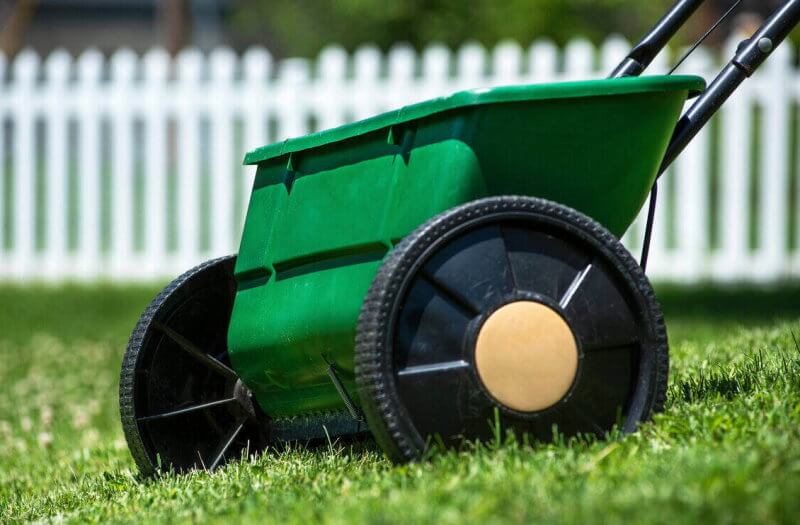
When it comes to refreshing the lawn, Austin residents have a few options. They can start fresh, but that can be expensive. Alternatively, they can look into the benefits of overseeding their lawn.
Overseeding is the process of sowing seed throughout an already existing lawn rather than starting from scratch. This makes it much simpler and cheaper than having to run the whole process all over again.
This process is essential for maintaining a strong, lush lawn because grass can become slower to regrow over time, weakening its appearance and opening up the door for unwanted weeds.
Signals of Time for Overseeding
You’ll know it’s time to overseed when you take a good look around your yard and realize the grass isn’t as vibrant as it used to be. Stroll through the lawn and pay attention to the areas looking worse for wear. If the soil is loose, level, and draining well, then that’s a sign it’s time to overseed.
Another key element to take into account is the age of your lawn. If it’s been several years since the seed was last replanted, you should definitely consider overseeding.
Best Time to Overseed
The ideal time to overseed is typically mid-September to early October. If it’s already late October, the next best thing is waiting until spring.
Overseeding Process
Getting started on an overseeding project is easy. First, reduce your mowing height to a consistent level of 1 to 2 inches. Then, aerate or roto-till the soil to break up compactness and give roots breathing room. Spread compost evenly to give new grass an extra boost of nutrients.
Once that’s done, it’s time to dispense the seed. Choose a seed variety that is in line with the existing lawn. Don’t select one that’s too cheap, or else you’ll be compromising the quality of your grass. Use a hand seeder, rotary spreader, or drop spreader to evenly scatter the seed across the lawn.
After that, lightly rake the areas to help the seed intermix with the soil. Finish up with a time-release nitrogen fertilizer and water the lawn right away. Make sure to keep up with watering the lawn for the next couple of weeks, but don’t drown it.
Once the grass starts germinating, maintain a consistent mowing height of 1 3/4 inches to 2 1/4 inches for the coming months.
Water Regulations in Austin
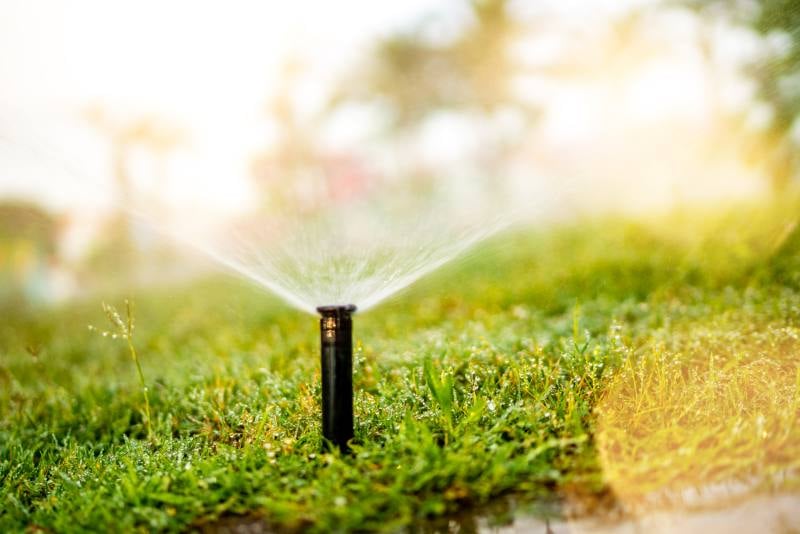
Living in Austin, TX, comes with a particular set of water-related regulations. Each week, Austin residents are required to abide by specific guidelines when it comes to watering their lawns. And while it might seem like an arduous task, with a few tips and tricks, you can easily manage your lawn and keep it in excellent condition while following Austin’s water regulations.
To start off, it’s essential to consider that Austin receives, on average, 35.5 inches of rain per year, over 10% lower than the Texas average. Therefore, the only way to ensure that your lawn stays properly hydrated is to follow certain steps to optimize and manage your watering.
You can check austintexas.gov for the exact watering schedule, so you can be sure to get it right. Additionally, note that if you don’t follow the regulations, you’re subject to fines of up to $500.
Here are 5 useful tips to help you out:
1. Water your grass at the right time.
When it comes to watering your lawn, timing is essential. It’s important to water your grass on a consistent schedule to ensure that it stays properly hydrated. However, you must also take into consideration your grass’s response to its given schedule.
Too much water can lead to the growth of weeds and other lawn diseases, while dehydrating your grass can have a devastating long-term impact.
Examine your grass frequently to determine if it has a blue-gray tint or doesn’t bounce back when stepped on, as these are two signs that your lawn needs to be watered a bit more.
2. Avoid watering between 12:00 pm and 6:00 pm.
This is the period of the day that is the hottest and least efficient to water your lawn. The heat in this time period causes the water to evaporate quickly, and it doesn’t get absorbed as well as it does earlier in the morning.
3. Make sure to water deeply.
When watering your lawn, it is important to water deeply and avoid frequent light waterings. This will help your grass roots develop properly and grip the soil firmly, which is key to lawn care success.
4. Water tough areas by hand.
Don’t leave it up to your sprinkler system to take care of every part of your lawn. Pay special attention to areas that don’t get shade and water them more often by hand as needed.
5. Get to know your lawn.
Lastly, it’s important to get to know your lawn, its soil type, and any additional needs it may have. Estimate how much water it needs based on its soil type and examine surrounding lawns to get an idea of what works best for you.
Even the smallest of details can make a big difference when it comes to maintaining a healthy and nourished lawn.
Common Lawn Insects in Austin
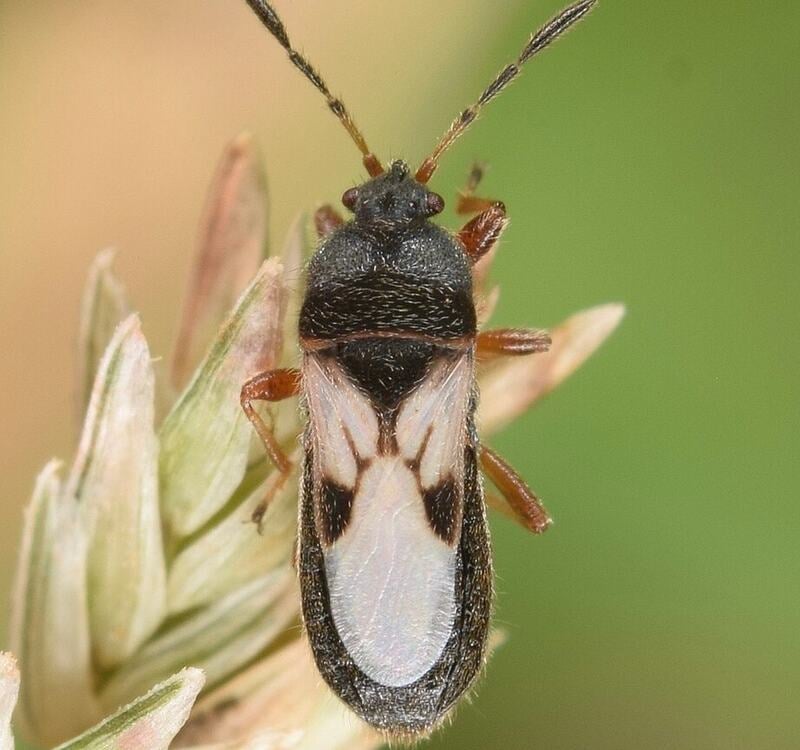
Pests like grubs and chinch bugs often threaten Austin’s beautiful lawns. If you’re an Austin homeowner, it’s important to watch out for these threats.
Grubs
Grubs are white, worm-like larvae, about a quarter of an inch to one inch long, that attack grasses such as Bermuda, buffalo, St. Augustine, and Zoysia. If left untreated, they’ll feed on your lawn’s roots and cause dead patches of grass.
You can tell if you have grubs by lifting the turf to see if it’s easy to remove and if grubs are present. To treat grubs, you can use beneficial nematodes, which are tiny worms that kill grubs and other pests.
Chinch Bugs
Chinch bugs are black with white wings and measure up to a quarter-inch in length. They usually affect St. Augustine grasses but can also attack Bermuda and Zoysia. You can spot them by the yellowish circles they create around dead or stunted-growth grass.
The best way to test for chinch bugs is by inserting a can of water into the grass in a sunny and dry area near sidewalks and curbs and seeing if the bugs float to the surface.
The first step is to identify an area that gets a lot of sunlight and no rainfall. Conditions should be dry for at least two or three days. Then, insert a can with an open bottom into the ground. Pour some water into the can, and watch to see if chinch bugs float to the top. If they do, you’ve detected them and can take preventative measures.
To treat chinch bugs, you can either invite natural predators like birds and big-eyed bugs or use insecticidal soap. To prevent future infestations, make sure your yard is watered regularly.
Weed Control

Nobody likes dealing with pesky weeds, but if you live in Texas, it’s likely you’ve encountered them. Weeds in Asutin can take over a lawn quickly, so it’s important to know how to identify them and the best removal methods.
Below are some of the most common weeds you might find in Austin, complete with tips on how to control them.
| Weed Type | Characteristics | Control Method |
| Bermudagrass (Cynodon dactylon) | Wire-like perennial with smooth, pointed leaves and small hairs at the blade-sheath junction | – Mulching – Shading – Post-emergent herbicides |
| Annual bluegrass (Poa) | Distinguishing features include boat-shaped leaf tips and branching seed clusters. | – Remove individual plants – Overseed to increase nutrient competition – Herbicides |
| Chickweed | Characterized by light green, spade-shaped leaves and red or purple flowers | – Hand or hoe weeding – Mulching |
| Crabgrass | Blade is from ¼ to ⅓ inches wide and up to 6 inches long;Easy to confuse with Bermudagrass, goosetongue, and other grasses | Cultivating and chemical options |
| Dandelion | Bright yellow flowers; leaves are graduated and wavy-edged; can reach up to 24 inches in height | – Mulching – Hoeing – Herbicides |
| Henbit | Blooms into a red and purple flower; can reach a height of 15 inches | – Mulching – Cultivating |
| Nutsedge | Often confused with grass because its leaves are wide and stronger compared to most grasses; thrives in waterlogged soil and is tough to tackle once established | – Dehydrate the area – Mulch – Herbicides |
| Purslane | Known for its deep red stems and oval-shaped, green, shiny leaves; can recover quickly | – Mulching – Cultivating |
Lawn Care Tips for a Lush Austin Summer Lawn
Summer in Austin is hot, and if you want your lawn to survive the intense heat, you’ll want to pay a little bit of attention to it.
Here are a few essential tips that you should consider to keep your lawn in the best condition during summer:
Make sure you have proper soil depth, at least six to eight inches beneath your turf. This will help your lawn absorb the limited water supply due to the Austin regulations and maintain your grass’s nutritional and hydration levels.
Establish a healthy turf to reduce the necessity for herbicides. Overusing herbicides can cause long-term problems, such as killing the grass and other plants surrounding it, as well as polluting the environment.
Aerate your lawn at least once a year to create spaces in the soil and make it easier for your grass to grow its roots.
When you do water, water efficiently, trying to get the water deep into the soil. Early mornings are usually the best time to water your lawn, as this is when it will absorb the most before evaporating due to the intense heat.
Test the soil periodically and adjust your fertilizing schedule accordingly. Assessing the needs of your lawn can ensure that you don’t give it too much or too little attention. Check out our guide on why soil testing is important.
Lawn Care Services in Austin, TX
Regarding professional lawn care in Austin, the city has no shortage of experienced specialists ready to help. They can provide you with a comprehensive lawn care program tailored to your property, so you can maintain a lush, healthy lawn that’s the envy of the neighborhood.
These services usually include:
- Mowing
- Edging and trimming
- Weed control
- Fertilization
- Aeration
- Overseeding
On average, you can expect to pay between $130 and 200 for these services. It pays to research and ensures the lawn care specialist you hire has the knowledge, experience, and equipment needed to do the job correctly.
Whether you’re looking for some routine lawn maintenance or a major overhaul, an experienced Austin lawn professional can make all the difference.
FAQ
Keeping your lawn healthy in Austin, Texas, means understanding the area’s unique climate and soil conditions.
Test your soil regularly to make sure you suitably adjust your fertilizing schedule. Plus, you’ll need to select the correct grass type adapted to the warm, dry climate. It’s also important to mow the lawn regularly, water efficiently, and aerate once a year.
In Austin, TX, it’s recommended to mow your lawn at least once a week to maintain it in top condition. This ensures a healthy lawn that looks well cared for.
The average cost of lawn care services in Austin, TX, is usually between $130 and 200, though this can vary depending on the size of your lawn and which services you opt for.
It’s best to get some free quotes from reputable lawn care companies before making any final decisions.
The best fertilizer for your lawn in Austin, TX, will depend on the type of grass you have and its specific needs. Austintexas.gov recommends using fertilizers with balanced amounts of nitrogen, phosphorous, and potassium to ensure healthy growth.
In Austin, TX, you should water your lawn once a week due to the area’s water restrictions. To get the most out of your water, make sure to do it early in the morning since the intense heat can cause the water to evaporate quickly.
To deal with weeds in Austin, pre-emergent herbicides are key. You might need to get your hands dirty and pull chickweed by hand for spot treatments. But this can be a tedious task, so it’s best to act before the weeds take over.
Final Thoughts on Austin Lawn Care
Taking care of your Austin lawn can be tricky, but the right tools and techniques can keep it looking lush and healthy. Periodic soil testing, choosing the right grass, and regular mowing are essential for a beautiful lawn. Be aware of your area’s water restrictions and try to use efficient watering methods.
If time and resources are an issue, professional lawn services in Austin can also be a great help. With the right approach, you can have a healthy-looking lawn in no time!
Main Photo Credit: Wpcpey / Wikimedia Commons / CC BY 4.0





